To continue from Fukuoka, where we had visited Takachiho, Yufuin and Nagato.
Our next destination is Hiroshima where we will cover Miyajima, Onomichi and Kitakyushu. From Hakata station, it took an an hour ride to reach Hiroshima station.
The first city in Japan that I came across is not Tokyo or Osaka, it is Hiroshima and was told by my History Class teacher where she was teaching us on WW2.
Hiroshima
Though it was attacked by atomic bomb but is it really safe to visit ?
 |
| Atomic bomb of mushroom clouds over Hiroshima(left) and Nagasaki(right). |
The answer is YES... Due to the fact, that the atomic bomb had exploded way above the ground, it did not soaked into soil before it exploded. There a barometer trigger mechanism, built into the bomb which is why, the radioactive elements was released mainly in the air instead deep into the ground or soil. So if it is unsafe, why there are still more than a million of citizens, live here?
Homestay
芝水庵 - my host is an elderly couple.
It is actually a private detached house with a garden.
Host rent out a portion of the lower floor to guest while they reside on the upper floor.
The Outlet Hiroshima
Address: 4-1-1 Ishiuchihigashi, Saeki, Hiroshima 731-5162, Hiroshima Prefecture
We came to this place is because of Wonder Rink. BF can have his ice-skating while I can do my shopping while Boss can enjoy filling up his tummy. One stone kill 3 birds. heehee..
As time was running out, we took a cab over and it cost us JPY4000 for 30min ride.
The Outlet is located on the top of the hill, as it was winter and it was surrounded with fog, making it even colder. Outlet retails shops of International brands or big local brands are located on level 1 while basement 1 include an AEON supermarket, many dining choices, CAPCOM amusement centre and a cinema.
Wonder Rink is located in CAPCOM amusement centre, BF is pretty lucky to have the whole rink by himself. The staff there are very friendly, helpful and alert to the skaters. Thus, we went shopping at ease.
My shopping... not much except for Adidas, Cath Kidston and Blue Label.
As there are too much choices for dinner and we ended up having 2 rounds:
My shopping... not much except for Adidas, Cath Kidston and Blue Label.
As there are too much choices for dinner and we ended up having 2 rounds:
Our official first meal here..
Okonomiyaki is a very local food that was invented during ww2 to fill up the tummies of the war torn city. Today, it is a well known local food.
Okonomiyaki is a very local food that was invented during ww2 to fill up the tummies of the war torn city. Today, it is a well known local food.
Round 2 dinner at Sen Sushi which located just a few steps away from our round 1 dinner of Okonomiyaki at 二代目. As we were rather full from okonomiyaki, our order for sushi is very less.
Only 6pm here but the skies is already totally dark. We decide to make our way back for next day's adventure.
Took a bus from The Outlet to Nishihiroshima JR station which is about 40 minutes ride.
Another small station that had seen through the time. There are some F & B shops here, bus stop and it is very crowded!
Another small station that had seen through the time. There are some F & B shops here, bus stop and it is very crowded!
Miyajima (宮島)
Like most of Japan, Miyajima was once a volcano today this island is the top 3 scenic sights of Japan.
Miyajima is small enough to cover by foot, and there are English-language signs throughout the island. Although the island has a population of only 2,000 people, it welcomes 4 million visitors per year. It took us a 10 minute ferry ride from the main land to this island at JPY180 per person.
The sacred island of Miyajima features many beautiful views. Miyajima Island (official known as Itsukushima Island) floats like a diamond in the Inland Sea of Japan. From the misty beginnings of Japanese history Miyajima Island has been considered one of the most scenic places in Japan. For more than a thousand years, out of respect for the Miyajima Gods, no one dared to live on the island. Visitors to the island, who were mainly fishermen, would always leave the Island at the end of each day.
As the land of the island was considered to be so sacred the shrine was built over water. When people eventually inhabited Miyajima Island they were forbidden to till the soil, give birth, die or be buried in the sacred ground. Even today there are no hospitals or cemeteries on Miyajima Island.
As the land of the island was considered to be so sacred the shrine was built over water. When people eventually inhabited Miyajima Island they were forbidden to till the soil, give birth, die or be buried in the sacred ground. Even today there are no hospitals or cemeteries on Miyajima Island.
We took a train to Miyajima station and walk all the way straight to reach the pier.
 |
| Our ferry tickets are included in JR pass. |
 |
| You can drive your car into the ferry to Miyajima! |
Half way from the ferry ride ... I can no longer contain my excitement as I no longer see this place is the book!
At Miyajima pier station, you can see that this place is really full with people from the local and also international.
The first thing that welcome us on the island... Deers .. the most common sight in Miyajima - the wild deers and there are so many of them from young to old. They wander freely through the streets and parks. Though they are wild animals but they are actually gentle and friendly and always waiting for food.
According to Shinto, deers are said to be the messagers of the deity.
This is a very scenic place, every street, every corner is Instagram worthy.
The present Great Torii was built in 1875, and is the eighth torii in history. The Great Torii is the boundary between the spirit and the human worlds. During high tide, the great Torii looks like it is floating on the sea. It is especially beautiful to view the great Torii from Hitasaki.
During low tide, you can walk to the foot of the great Torii.
Itsukushima Shrine
The first Itsukushima Shrine was founded in 593AD but it was destroyed several times.
The present shrine dates from 16th century but the design of the shrine was dated from 12th century.
Admission ticket vary from JPY300 - JPY500 per adult. The most perfect spot to snap the photo of the Great Torii is located inside of the shrine.
During low tide, you can walk to the foot of the great Torii.
The first Itsukushima Shrine was founded in 593AD but it was destroyed several times.
The present shrine dates from 16th century but the design of the shrine was dated from 12th century.
Admission ticket vary from JPY300 - JPY500 per adult. The most perfect spot to snap the photo of the Great Torii is located inside of the shrine.
Lunch at 鳥居
Mt Misen, the highest mountain on Miyajima Island rises 535 meters above sea level. Mt Misen is covered with a primeval forest which is part of the World Heritage listing for Miyajima.
Free shuttle bus for Momijidani Park is available. Look out for the timings.
A ropeway leads up the mountain from town, but it is also possible to climb up on foot.
Here is the ropeway centre.
We took the cable car up to the mountain while immersed into the scenery along the way.
From a cable car, we need to switch to a funicular to reach Shishiiwa station where our trekking start.
I think I was lucky to chose to have a break at the café at Shishiiwa station which is consider the start of the trek. My 2 heros, Boss and BF decided to challenge Mt Misen.
At Shishiiwa station, there is Shishiiwa observatory.
The trekking path on the mountain that consist of rough and smooth pathways as well as stairs path.
There are a numbers of Buddhist shrine near the peak where Boss stop his challenge here at Kanman No Iwa shrine.
BF completed the whole course reaching 571 meters where the clouds just pass through him. The surrounding is misty and foggy so they are pretty cold up there.
The whole adventure took them near 2 hours.
Same as how we came up, we took the funicular then switch to the cable car down.
Omotesando Shopping Street is the busiest place in Miyajima for souvenior shops and restaurants. This area was formed from land reclaimed at the end of the Edo period. This area became the main street during the Showa period, as the area developed economically. Both sides of the street are packed with souvenir shops and restaurants.
Boss chosen Unagi bun!
Free shuttle bus for Momijidani Park is available. Look out for the timings.
A ropeway leads up the mountain from town, but it is also possible to climb up on foot.
Along the way up, the air was fresh and park was beautiful with awesome scenery.
Red maple leaves was scattered throughout the park.
Rivers and ponds are so crystal clear that you can see through the beds.
Here is the ropeway centre.
We took the cable car up to the mountain while immersed into the scenery along the way.
From a cable car, we need to switch to a funicular to reach Shishiiwa station where our trekking start.
I think I was lucky to chose to have a break at the café at Shishiiwa station which is consider the start of the trek. My 2 heros, Boss and BF decided to challenge Mt Misen.
At Shishiiwa station, there is Shishiiwa observatory.
The trekking path on the mountain that consist of rough and smooth pathways as well as stairs path.
There are a numbers of Buddhist shrine near the peak where Boss stop his challenge here at Kanman No Iwa shrine.
BF completed the whole course reaching 571 meters where the clouds just pass through him. The surrounding is misty and foggy so they are pretty cold up there.
The whole adventure took them near 2 hours.
Same as how we came up, we took the funicular then switch to the cable car down.
Omotesando Shopping Street is the busiest place in Miyajima for souvenior shops and restaurants. This area was formed from land reclaimed at the end of the Edo period. This area became the main street during the Showa period, as the area developed economically. Both sides of the street are packed with souvenir shops and restaurants.
Wondering it is winter, the shops start to close at 1630hrs.
Boss chosen Unagi bun!
It was barely 1730hrs and it is turning dark, bye bye Miyajima, you look better in person than from the book!
Today we will be exploring Hondori Shopping Street & Peace Park.
Exploration start from a local train.
At Hondori station, it is not just the infamous shopping streets, it is also where the Peace Park, A. Bomb Dome and hypocentre located. The modern colourful Hondori Shopping Street has a shocking past behind.
Exploration start from a local train.
At Hondori station, it is not just the infamous shopping streets, it is also where the Peace Park, A. Bomb Dome and hypocentre located. The modern colourful Hondori Shopping Street has a shocking past behind.
While walking towards to the Peace Park, came across this interesting parking service for motorcycles only.
From shopping street, we walk straight towards Aioi Bridge(相生橋), the river flowing below is Motoyasu River. Aioi Bridge was originally the target for the 1945 atomic bomb as the design is easily to be seen from the air. Although the bridge was not destroyed by the atomic blast, it did sustain heavy damage from the raid.
Walk further in towards the right side you will meet these :
At the left hand side, you will come across "Pond of Peace" where the Eternal Flame and The Memorial Cenotaph located.
The names of those who lost their lives are inscribed inside the central stone vault, it currently hold more than 290,000 names of those who perished in that event and whenever new names are discovered, it will be added to the list every year.
To start out learning journey on the Atomic Bomb, we prayed our respect to The Memorial Cenotaph.
To start out learning journey on the Atomic Bomb, we prayed our respect to The Memorial Cenotaph.
These are the photos that show Hiroshima before bombing.
But everything changed at August 6, 1945 of 0815am
When the first atomic bomb was dropped over Hiroshima on August 6, 1945, the city became known worldwide for this unenviable distinction. At 0815am, the American B-29 bomber Enola Gay dropped an atomic bomb dubbed "Little Boy" on Hiroshima.
 |
| This is "Little Boy" |
The destructive power of the bomb was tremendous and obliterated nearly everything within a two kilometer radius. It is estimated that at least 70,000 people were killed in the explosion and its immediate aftermath. This is the scaled-down model of the flatten Hiroshima city after the explosion. This red ball represent the hypocentre of the explosion point.
Before you scroll down further, please be informed that you might not be comfortable on the following content which includes photos of victims from the blast. Victims are photographed with horrible injuries. Photos are at size "medium". If you want to have a better view of the photos, please PM me. Read at your own risk.
Most of the city was built of wood, and fires raged out of control across nearly five square miles, leaving behind a charred plain with a few scattered concrete structures. Corpses lay piled in rivers; medical treatment was virtually non-existent, as most of the city's medical facilities had been located near the hypocenter, and the few doctors left standing had no idea what hit them. That evening, radioactive materials in the atmosphere caused a poisonous "black rain" to fall.
In the days ahead, many survivors began to come down with strange illnesses, such as skin lesions, hair loss, and fatigue. Between 70,000 and 140,000 people would eventually die from radiation-related diseases. Known as hibakusha, the survivors were also subject to severe discrimination from other Japanese, but have since been at the forefront of Japan's post-war pacifism and its campaign against the use of nuclear weapons.
In the museum, the history of Hiroshima before and after the bombing is exhibited with pictures, movies and displays. Also, there are some items that convey the devastation caused by the atomic bomb.
The Museum also displays belongings left by the victims, photos and other materials that convey the horror of atomic bomb. Each of the items here embodies with grief and pain on them.
Recovery was very slow, given the scale of the devastation. The Museum also displays belongings left by the victims, photos and other materials that convey the horror of atomic bomb. Each of the items here embodies with grief and pain on them.
After the war, great efforts were taken to rebuild the city. Predictions that the city would be uninhabitable proved false. Destroyed monuments of Hiroshima's historical heritage, like Hiroshima Castle and Shukkeien Garden, were reconstructed. In the center of the city a large park was built and given a name that would reflect the aspirations of the re-born city: Peace Memorial Park.
The skeletal remains of the A-Bomb Dome (原爆ドーム Genbaku Dōmu) are the most recognizable symbol of the atomic bombing in Hiroshima. In another lifetime, the building was one of the city's best-known sights for an entirely different reason; designed by Czech architect Jan Letzel in 1915, the Hiroshima Prefectural Commercial Exhibition Hall (and its fanciful green dome) had a bold European style in a grimy, crowded city with few modern flourishes. Because the explosion took place almost directly above the building, the walls remained largely intact, even as the dome shattered and the people inside were killed by the heat of the blast. Initially, as the city rebuilt, it was left alone simply because it was more difficult to demolish than other remains in the area; gradually, the A-Bomb Dome became the symbol it is today. The "Hiroshima Peace Memorial" was declared a UNESCO World Heritage site in 1996. Today, the benches around the Dome are a favorite spot for Hiroshima natives to read, eat lunch, or simply relax. Right next to A Bomb Dome is a plaque which marks the hypocenter, the exact point above which the bomb exploded.
Nagasaki Atomic Bomb Museum/ Peace Park
Barely 3days after Hiroshima was dearly attacked by the atomic bomb named "Little Boy", second bomb named "Fat Man"
was dropped on Nagasaki on 09Aug 1945, wiped out almost 40,000 civilian this round, Emperor Hirohito called for an unconditional surrender and marked the end of WW2 on 15 Aug 1945. This second atomic bomb was scheduled for 11 Aug 1945, primary target as Kokura at Kitakyushu, secondary target is then Nagasaki. However due to bad weather forecast is casted for 11 Aug 1945, the attack was brought forward to 09Aug 1945 instead, heading for Kokura. Due to some delays in the logistics, dark clouds, intentional burning of coal tar producing black smoke by the locals and smokes from nearby firebombings clouded the skies over Kokura and half of Kyushu was
blanketed. The clouds and smoke resulted in 70% of the area over Kokura being covered, obscuring the aiming point and visibility dropped drastically. Fuel was running low on the fighter's plane, finally the pilot was able to spot a last-minute break in the clouds over
Nagasaki , the "Fat Man" was dropped over the city's industrial valley and exploded 47 seconds laterat Urakami Valley.
As Little Boy was detonated in mid-air, hundreds of feet above the Earth’s surface, as a result, the radioactive debris was taken aloft and dispersed by the mushroom cloud rather than being drilled into the earth. Like Hiroshima, the radioactive did not went under the soil. It is safe to travel and stay in Nagasaki.
The museum is a remembrance to the second atomic bomb that was dropped on Nagasaki on 9th August in 1945 at 11:02am. A clock which stopped at 11:02 is also on display to demonstrate how so many people were killed in an instant.
Address & Direction : 7-8 Hirano-machi, Nagasaki
It is most easily accessed by tram line 1 or 3 in ten minutes from JR Nagasaki Station.
The park is a short walk from "Matsuyamamachi" or "Hamaguchimachi" tram stop.3
Our lunch at the famous Ichiran Ramen(一蘭) - Hondori Hiroshima
Address: M2F/2F, 2 Chome -3-22, Kamiyacho, Naka Ward Hiroshima 730-0031 Japan
The very famous lonely dining.. you eat in your own cubicle. And the ramen is really very yummy which is originated from Fukuoka. The soup is very thick and the aroma just stay in my throat.
The idea of dining in this restaurant is very special. One seater cubicle is designed throughout. You can call it "lonely dining" but to Ichiran this system is called "flavour concentration booth" where guest suppose to enjoy the delicious ramen is peace so that guest can really concentrate the flavour within. After purchasing the type of meanu you want, staff will show you to your own cubicle, you use the pencil to order the exact flavour you want( how the noodles to be done? how thick the broth you prefer ?"etc ), once done, press the dozer and staff with come to collect this form from you by lifting up the curtain. 10 minutes later, staff lift up the curtain again to serve you your order.
No words exchanged at all...
No words exchanged at all...
Once you finished your meal, pay at the counter.
Hon-Dori shopping arcade is located in the bustling downtown area, which is a pedestrian arcade that is closed to traffic and lined with shops and restaurants. It is merely one street away from the Atomic Bomb Hypocenter and minutes walk to the Peace Park.
There are sock shops, underwear shops, shoe shops, clothes shops, swimwear shops, hat shops, bag shops, jewellery stores and shops where you can purchase gloves. Everything you need to buy an entire new outfit! The clothes shops in the arcade range from cheap, to reasonable to expensive and there are items to suit all tastes and budgets. Most of the shops on the arcade stock the current season’s fashions and the sales racks can yield some good bargains. If you are looking for a reasonably priced shoes you could try ABC Mart which it is representing many different brands of shoes.
Yummy dinner at this Old School café along Hon-Dori.
Onomichi (尾道) can be easily reach via an hr JR ride from Hiroshima station. Located in the Seto Inland Sa of eastern Hiroshima. This is a small town with a downtown area that can be comfortably explored by foot. The town was built on a series of hills, so to walk between attractions often involves walking up or down slopes.
Onomichi is divided into two areas; the mountain-side & the sea-side.
The mountain-side is known for temple hopping trip. It has a lot of temples located on the slopes.
Cat Alley is located here, do expect some trekking and long stairways. You need to pass through some temples and some tomb-stones.
The sea-side is well known for the shopping street with nice retail shops, nice restaurants and nice café , and also the nice view of the sea. I felt that both areas are very nostalgic, warming and calming.
Onomichi shopping street is the one I am referring to. Walking down this street makes me feels so good! It seems the time stopped here. There are so many things to see as we walked around, there are many old buildings that are being passed down from generations to generations.
Our last stop here before heading back to Hiroshima Town - Ittoku-go Pudding.
Address : 3-1 Higashigoshocho, Onomichi, Hiroshima Prefecture 722-0036 Japan
Onomichi is divided into two areas; the mountain-side & the sea-side.
The mountain-side is known for temple hopping trip. It has a lot of temples located on the slopes.
Cat Alley is located here, do expect some trekking and long stairways. You need to pass through some temples and some tomb-stones.
Onomichi shopping street is the one I am referring to. Walking down this street makes me feels so good! It seems the time stopped here. There are so many things to see as we walked around, there are many old buildings that are being passed down from generations to generations.
Onomichi Roman Coffeeshop
Address: 4-1 Toyohi Motomachi, Onomichi-shi, Hiroshima-ken 722-0034, Japan
As we were strolling down the Onomichi street, this coffeeshop caught our eyes.
The coffee is as good as the shopfront, very well perfect brew.
Food are simple yet delicious.
There is a sense of nostalgic feel in the atmosphere here that makes us feel as if we are been transported through time. This street is only 1.6km but you will find a wide variety of shops such as ramen shops, Onomichi yaki shops, old-fashioned coffee shops, souvenir shops of Onomichi Hanpu (canvas) and many more.
We met with a lot of young shop owners here that told us, they moved and settled down here is due to their love for nostalgic atmosphere here.
Onomichi Eau de Parfum
Eau de Parfum is the original perfume that are jointly developed by "Shiseido" and Onomichi jointly developed. Sakura is selected as the city flower of Onomichi so the principle of this product is no other than Sakura itself. As soon as these products hit the market, it's popularity soar high. As these are limited products, you will not be able to get them elsewhere than here.
We met with a lot of young shop owners here that told us, they moved and settled down here is due to their love for nostalgic atmosphere here.
Our last stop here before heading back to Hiroshima Town - Ittoku-go Pudding.
Address : 3-1 Higashigoshocho, Onomichi, Hiroshima Prefecture 722-0036 Japan
Onomichi Pudding is getting more and more famous as the latest Onomichi’s local sweets. Pudding is usually served with caramel sauce. However, this pudding has lemon syrup instead of caramel sauce. Lemon is a local product of Onomichi, adding it into the pudding does enhance to flavour further.
While waiting for our train back to Hiroshima, we came across non-stop shinkansen that were passing by. 297km/h, unknowingly to me, my jaw dropped when it zoomed past me.
Ekie Plaza Sushi
Back to Hiroshima Station, chance upon this restaurant at the level 1 of Ekie Plaza.
As well as the Teppanyaki Dinner here as well.
Kitakyushu (北九州)
Located in Fukuoka Prefecture so we are going backwards today. Hahhahaa
Kitakyushu is made up of 5 independent cities, namely, Kokura, Moji, Yahata, Tobata and Wakamatsu. Especially on Kokura, which was the primary target of the nuclear weapon "Fat Man" on August 9, 1945. There was 3 failed attempts on Kokura from the America's fighter plane as the pilot could not identify the target clearly due to an air raids from the previous day as well as a smoke screen was created by industrial workers burning barrels of coal tar and/or electric plant workers releasing steam. The bomb was ultimately dropped on the city of Nagasaki, which is the secondary target.
Kitakyushu is made up of 5 independent cities, namely, Kokura, Moji, Yahata, Tobata and Wakamatsu. Especially on Kokura, which was the primary target of the nuclear weapon "Fat Man" on August 9, 1945. There was 3 failed attempts on Kokura from the America's fighter plane as the pilot could not identify the target clearly due to an air raids from the previous day as well as a smoke screen was created by industrial workers burning barrels of coal tar and/or electric plant workers releasing steam. The bomb was ultimately dropped on the city of Nagasaki, which is the secondary target.
Address: 2-4-1 Higashida, Yahatahigashi-ku, Kitakyushu 805-0071, Fukuoka Prefecture
From Hiroshima station, we took a train to Kokura station and transfer to Space World station and walk for 5 minutes.
The Museum is one of the largest history museum in Japan, it presents the evolution of life on earth and human history and the exhibition covers a wide range such as the process of evolution.
Hope this photo will impress you before we start.
Once you enter the main hall exhibition you will be greeted by the large skeletal reconstructions of various dinosaurs, especially noticeable is the mighty T-Rex!. Next to it is a giant long-necked dinosaur, enough to blow you away. Jurassic Park does really exist! The fossil rocks are so beautiful that it look like beautiful piece of art.. Nobody believed it is millions years old.
Hope this photo will impress you before we start.
Once you enter the main hall exhibition you will be greeted by the large skeletal reconstructions of various dinosaurs, especially noticeable is the mighty T-Rex!. Next to it is a giant long-necked dinosaur, enough to blow you away. Jurassic Park does really exist! The fossil rocks are so beautiful that it look like beautiful piece of art.. Nobody believed it is millions years old.
On 2nd floor there is culture history and life of the Japanese in Kyushu while on the 3rd floor is the history zone that displays historical Japanese artifacts. These include old-style Japanese houses from the Showa period, and how Japanese living spaces have changed.
There is a souvenir store near the entrance. Not really big scale but you can buy stone samples, cute stuffed toys etc…
From Space World station, we took a direct train to Mojiko station.
The look of this station is so beautiful.. "Neo-renaissance" style. The time here since stopped since decades ago. Such an antique place. The platform of the station is filled with wooden planks. Such an old place yet still operational. The train station is going through an upgrade on the day of our visit.
Mojikō Station is the gateway to various tourist attractions and old buildings which have been preserved in the nearby streets under the name Mojikō Retro. A leisurely walk from the station takes you to the several other historic buildings located in an attractive waterfront area. These buildings were initially constructed about a century ago to accommodate and facilitate flourishing businesses thanks to the thriving trade with the Asian continent. Some of them are open to visitors and house the likes of libraries, cafes, restaurants and museums.
Kyushu History Railway Museum
Address : 2-3-29 Kiyotaki, Moji-ku, Kitakyushu-shi, Fukuoka 801-0833
Book Café
Address ; Hiroshima Station, next to Shinkansen Entrance
We have reached the end of Hiroshima / Miyajima / Kitykyushu / Onomichi.
Please keep a lookout for my next blog on the amazing Kinosaki Onsen Town.
To continue below cities, please visit below.
1) Kinosaki Onsen Town: https://followblueginger.blogspot.com/2019/01/kinosaki-onsen-town-2d1n-kyushu-chugoku.html
2) Kyoto - Day trip from Osaka: Updating is in the process
3) Osaka : Updating in the process, please come back later
4) Special Edition on Nagato :
https://followblueginger.blogspot.com/2019/01/special-edition-my-off-beaten-track.html
5) Kagoshima/Sakurajima/Ibusuki:
Please keep a lookout for my next blog on the amazing Kinosaki Onsen Town.
To continue below cities, please visit below.
1) Kinosaki Onsen Town: https://followblueginger.blogspot.com/2019/01/kinosaki-onsen-town-2d1n-kyushu-chugoku.html
2) Kyoto - Day trip from Osaka: Updating is in the process
3) Osaka : Updating in the process, please come back later
4) Special Edition on Nagato :
https://followblueginger.blogspot.com/2019/01/special-edition-my-off-beaten-track.html
5) Kagoshima/Sakurajima/Ibusuki:
6) Hakata/Yufuin/Takachiho/Nagato: https://followblueginger.blogspot.com/2019/01/hakata-yufuin-takachiho-nagato-4d3n.html
In summary, for the past 18days, we had left our footprints behind at :
If you are still keen to find out where are the other parts of Japan we had visited, please continue to browse through the main menu of the blog.
Thank you for dropping by.
Wish you good luck.























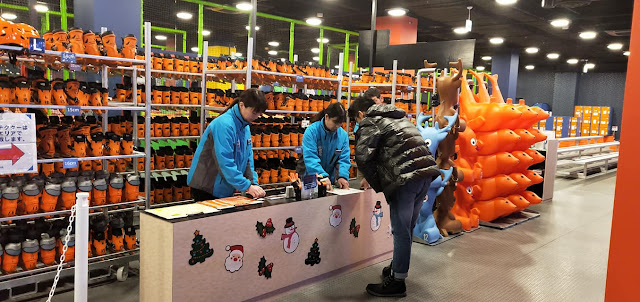



































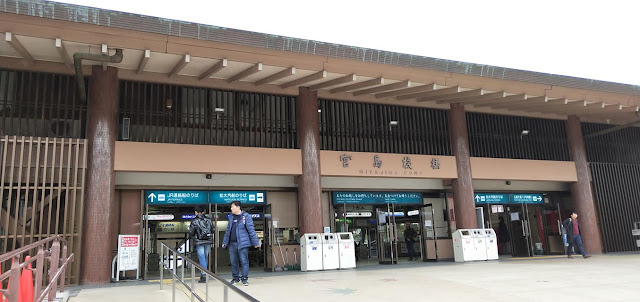





















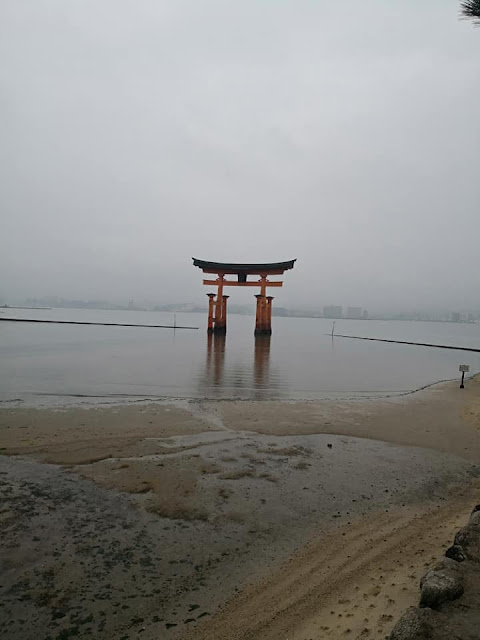





































































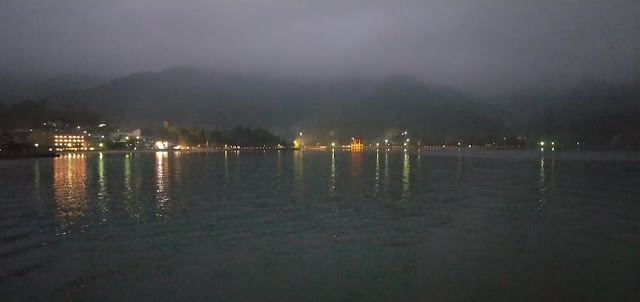



























































































































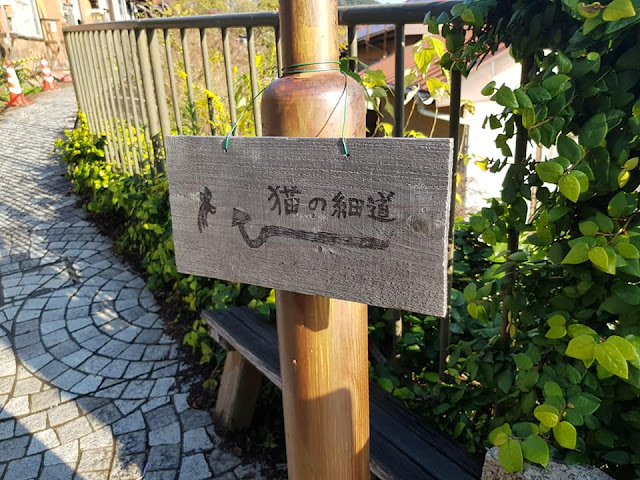

































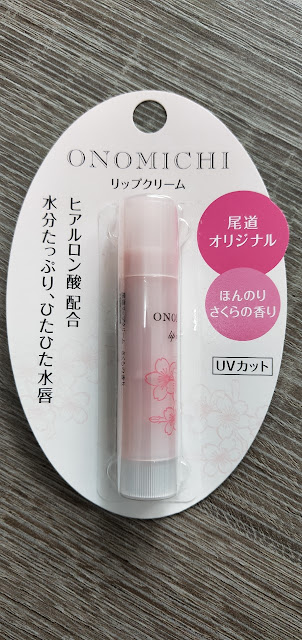




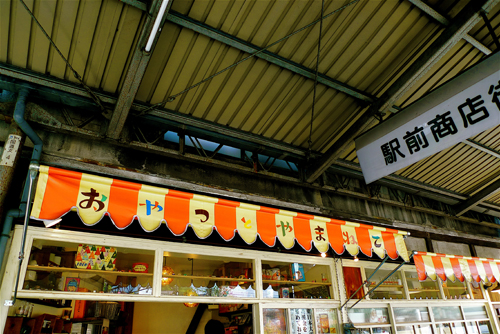
















































































































I'm going to Japan soon. Thanks
ReplyDelete